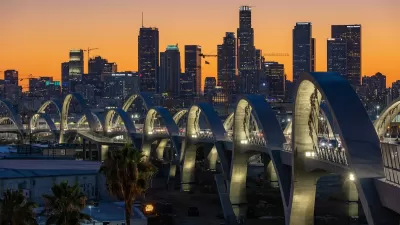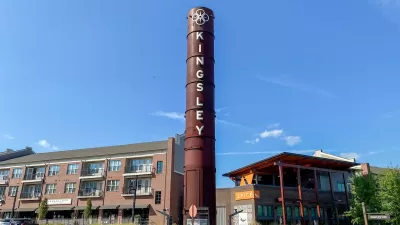Humans' love of water makes waterways a particularly attractive urban amenity. Why did so many American cities let theirs languish?

“People love water. And they love to be close to it,” writes Alan Ehrenhalt in Governing. “Fondness for water seems to be wired into the human brain, and urbanites feel it about as strongly as anyone else.” So why do so many American cities fail to activate their waterfronts? “For every city that has taken good care of its waterfront, as Chicago has, there are many that, over the 20th century, let the waterfront decline into a dingy commercial dumping ground that nobody would want to visit, even if they could find a way to get there.”
More recently, this is starting to change. Ehrenhalt traces the history of many U.S. waterfront towns, which naturally began as ports. “The next step was development as a manufacturing hub that took in maritime shipping and distributed its products to the city and the nearby hinterland. Then, in the mid-20th century, came waterfront decline and abandonment as trucking replaced water shipping as the primary economic engine.”
Now, cities are looking to their neglected waterfronts as potential engines of economic recovery and civic revitalization. Starting with San Antonio’s River Walk in the 1960s, cities around the country encouraged redevelopment along their waterways. “They can’t just be tourist gimmicks. They should incorporate the history of the neighborhood and the city. They need to make use of old buildings. And they need to make creative use of the water itself.”
For Ehrenhalt, unlike the thornier challenges of the housing crisis or inequality, revitalizing waterfronts is one of the easier urban challenges to solve. “[W]e can take the waterfronts that exist in nearly every big city and turn many of them into civic assets that bring people comfort and enjoyment.”
FULL STORY: Waterfronts Are Great for Cities — When They’re Done Right

Trump Administration Could Effectively End Housing Voucher Program
Federal officials are eyeing major cuts to the Section 8 program that helps millions of low-income households pay rent.

Planetizen Federal Action Tracker
A weekly monitor of how Trump’s orders and actions are impacting planners and planning in America.

Ken Jennings Launches Transit Web Series
The Jeopardy champ wants you to ride public transit.

California Invests Additional $5M in Electric School Buses
The state wants to electrify all of its school bus fleets by 2035.

Austin Launches $2M Homelessness Prevention Fund
A new grant program from the city’s Homeless Strategy Office will fund rental assistance and supportive services.

Alabama School Forestry Initiative Brings Trees to Schoolyards
Trees can improve physical and mental health for students and commnity members.
Urban Design for Planners 1: Software Tools
This six-course series explores essential urban design concepts using open source software and equips planners with the tools they need to participate fully in the urban design process.
Planning for Universal Design
Learn the tools for implementing Universal Design in planning regulations.
Ada County Highway District
Clanton & Associates, Inc.
Jessamine County Fiscal Court
Institute for Housing and Urban Development Studies (IHS)
City of Grandview
Harvard GSD Executive Education
Toledo-Lucas County Plan Commissions
Salt Lake City
NYU Wagner Graduate School of Public Service





























